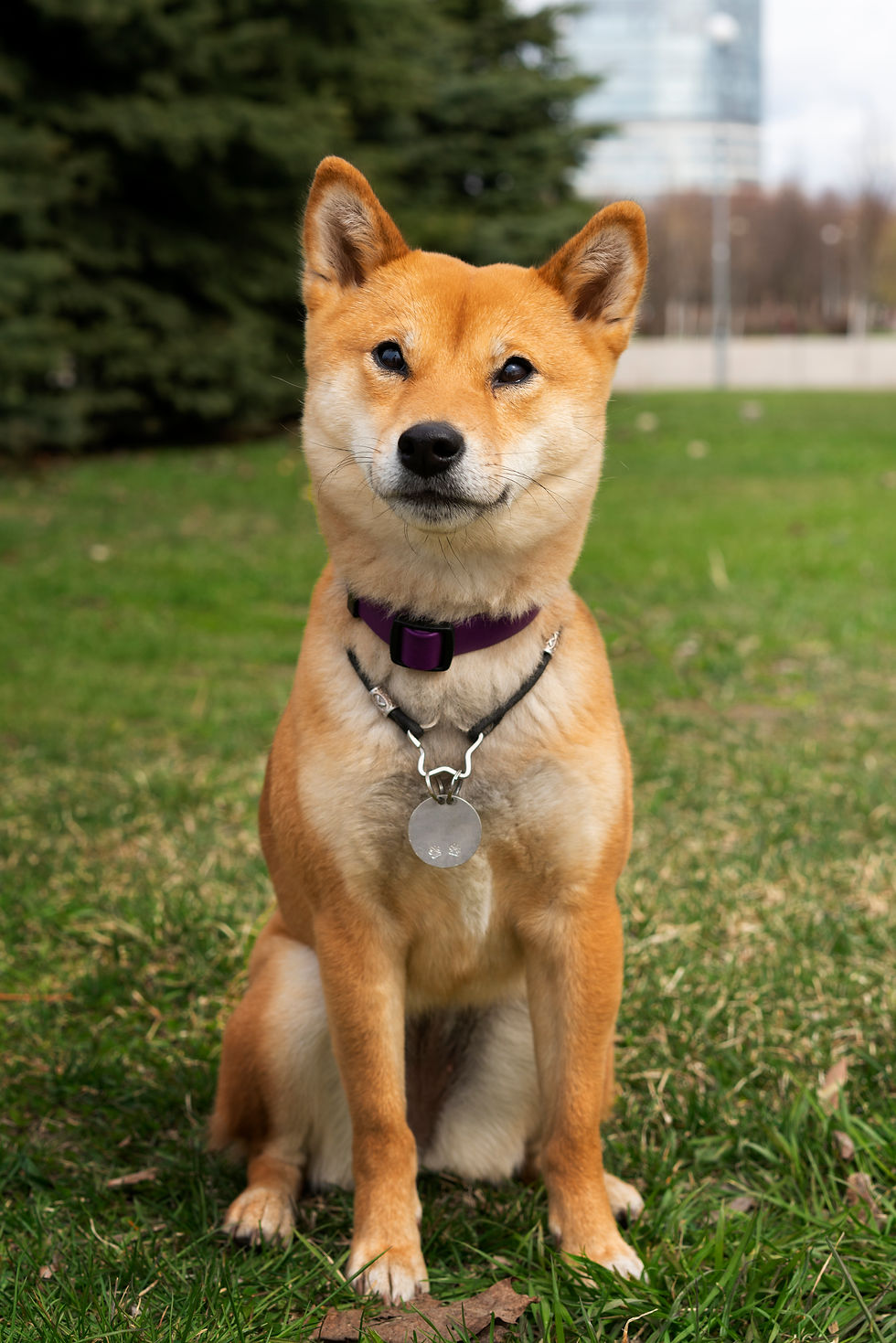How to Choose the Perfect Warm Dog Bed for Your Furry Friend
- Oliva Wilson
- Aug 21, 2025
- 6 min read
Have you ever noticed your dog curling up into the tiniest ball possible on chilly evenings? Does your pup constantly seek out the warmest spots in your home, whether it's a sunny patch on the carpet or right next to the radiator? Are you wondering if your four-legged friend might benefit from a cosier sleeping arrangement during those cold winter months?

Choosing the right warm dog bed can make a world of difference to your pet's comfort and wellbeing. It's not just about keeping them warm – it's about providing a sanctuary where they can rest properly, support their joints, and feel secure. Whether you've got a tiny Chihuahua who shivers at the slightest breeze or a senior Golden Retriever who needs extra joint support, finding the perfect warm bed is an investment in your dog's happiness.
Throughout this guide, we'll explore everything you need to know before you buy a warm dog bed. From understanding your dog's specific warmth requirements to navigating the various types of heated and insulated options available, you'll discover how to make an informed decision that suits both your pet's needs and your budget. We'll examine materials, sizes, placement strategies, and maintenance tips to help you choose a bed that'll keep your furry friend snug for years to come.
Understanding Your Dog's Warmth Needs
Why Do Dogs Need Warm Beds?
While dogs come equipped with their own fur coats, many actually struggle to regulate their body temperature effectively, especially during colder months. Small breeds, puppies, and senior dogs have particular difficulty maintaining their body heat. Their metabolism works differently from larger, younger dogs, making them more vulnerable to temperature drops.
Beyond basic comfort, a warm bed provides therapeutic benefits that many pet owners overlook. Heat helps relax muscles, improves circulation, and can significantly reduce joint stiffness – particularly important for older dogs or those with arthritis. Plus, a consistently warm sleeping spot means your dog expends less energy trying to stay warm, leading to better quality sleep and improved overall health.
Dogs naturally seek warmth because it reminds them of their earliest experiences. Puppies huddle together with their littermates for warmth and security, and this instinct stays with them throughout their lives. Providing a warm bed taps into this natural behaviour, offering both physical comfort and emotional reassurance.
Signs Your Dog Is Feeling Cold
Spotting the signs that your dog needs extra warmth isn't always straightforward. Sure, visible shivering is an obvious indicator, but there are subtler clues to watch for. If your dog constantly burrows under blankets, seeks out warm spots around the house, or curls up unusually tightly when sleeping, they're likely feeling the cold.
Behavioural changes can also signal temperature discomfort. A normally active dog might become reluctant to go outside or seem less enthusiastic about walks. Some dogs become more clingy, following you around the house or trying to snuggle closer than usual. You might notice them avoiding tiled floors or refusing to settle in their usual sleeping spot if it's become too cold.
Physical signs include cold ears and paws, hunched posture when walking, and slower movements first thing in the morning. If your dog takes longer to "warm up" and get moving after waking, they're probably spending the night feeling chilly. These signs become more pronounced in winter but can occur year-round in air-conditioned homes or draughty properties.
Which Dog Breeds Need Extra Warmth?
Certain breeds are naturally more susceptible to cold than others. Small breeds like Chihuahuas, Yorkshire Terriers, and Italian Greyhounds have less body mass to generate and retain heat. Their higher surface-area-to-volume ratio means they lose heat more quickly than larger dogs. These little ones often benefit from warm beds even in relatively mild conditions.
Dogs with thin or single coats also struggle in cooler temperatures. Breeds like Whippets, Greyhounds, and Chinese Cresteds lack the insulating undercoat that many other breeds possess. Similarly, dogs with very short hair, such as Boxers, Bulldogs, and Pit Bulls, don't have much natural protection against the cold. Even some larger breeds with thin coats can feel the chill more than you'd expect.
Age plays a crucial role too. Puppies under six months haven't fully developed their temperature regulation abilities, whilst senior dogs often have decreased metabolism and circulation issues. Dogs with health conditions like hypothyroidism, diabetes, or heart disease may also need extra warmth. If your dog falls into any of these categories, investing in a quality warm bed becomes even more important.
Material Matters: Fabrics and Fillings
Best Fabrics for Heat Retention
The fabric covering your dog's bed plays a crucial role in warmth and comfort. Fleece and sherpa fabrics excel at trapping heat whilst remaining soft and inviting. These materials create tiny air pockets that insulate effectively, and most dogs find the texture naturally appealing.
Microfibre and plush fabrics offer excellent heat retention with the added benefit of being highly durable and easy to clean. They dry quickly after washing, which is important for maintaining the bed's thermal properties. Corduroy and canvas options provide durability for dogs who dig or scratch at their beds whilst still offering decent insulation.
Avoid materials that feel cold to the touch, like leather or vinyl, unless they're specifically designed with thermal backing. Natural materials like wool provide excellent insulation but require more careful maintenance. Whatever fabric you choose, ensure it's tightly woven to prevent nail snags and maintain its insulating properties through multiple washes.
Durability Considerations for Heavy Chewers
If your dog tends to chew or dig at their bedding, durability becomes paramount. Look for beds with reinforced seams and heavy-duty fabrics like ballistic nylon or ripstop materials. These might not feel as plush as fleece, but they'll withstand considerably more abuse whilst still providing warmth.
Some manufacturers offer "chew-proof" beds with tough exteriors and protected zippers. While no bed is truly indestructible, these options significantly outlast standard beds with destructive dogs. Consider beds with replaceable covers – you can buy a durable outer cover and a softer inner liner for comfort.
Training and providing appropriate chew toys can help protect any bed, but choosing tougher materials gives you peace of mind. Some beds feature bitter-tasting coatings on edges and seams to discourage chewing. Remember that even durable beds need regular inspection for damage that could pose safety risks.
Location and Placement Tips
Where Should I Put My Dog's Warm Bed?
Strategic placement maximises your warm dog bed's effectiveness. Avoid areas with draughts, such as near doors, windows, or air vents. Even the warmest bed struggles against constant cold air flow. Instead, choose a corner or alcove where walls provide additional insulation and protection.

Consider your home's natural temperature variations throughout the day. Rooms with afternoon sun stay warmer into the evening, whilst north-facing rooms tend to be consistently cooler. Placing the bed where it catches morning sun can help warm it naturally, though ensure your dog has shade options during hot afternoons.
Height matters too – cold air sinks, so beds placed directly on cold floors lose heat more quickly. Consider using a raised bed frame or placing the bed on a rug or mat for extra insulation. Just ensure any elevation is stable and accessible for your dog, especially if they're elderly or have mobility issues.
Conclusion
Choosing the perfect warm dog bed requires careful consideration of numerous factors, from your dog's size and sleeping habits to your climate and budget constraints. We've explored how different breeds and ages have varying warmth needs, the importance of proper materials and construction, and the various types of warm beds available in today's market.
The key takeaway is that there's no one-size-fits-all solution. Your Chihuahua's needs differ vastly from your neighbour's Great Dane, and a puppy requires different consideration than a senior dog with arthritis. By understanding your specific situation – your dog's preferences, your home environment, and your practical requirements – you can make an informed decision that provides lasting comfort and value.
Ultimately, investing in a quality warm dog bed is investing in your pet's health and happiness. Whether you opt for a simple self-warming design or a feature-rich electric model, the right bed will provide your furry friend with a cosy retreat they'll love for years to come. Take time to research, read reviews, and consider all the factors we've discussed. Your dog's contented sighs as they settle into their perfectly chosen warm bed will make all that effort worthwhile.






Comments